This is my Dongle DAC. There are many like it, but this one is mine. It is my life. I must master it as I must master my life. Without me my Dongle DAC is useless. Without my Dongle DAC, I am useless. Yes – I’ve spent the better part of 30 years surrounded by friends in the USMC and I’ve actually heard this repeated more than once. Movie fans will remember it from Stanley Kubrick’s Full Metal Jacket, but there is a point to my reference in regard to the THX Onyx Dongle DAC which I’ve been playing with at home and on vacation over the past few months.

The THX Onyx Dongle DAC might be slightly late to the party, but it needs to be considered the “Godzilla” of the category if we’re turning this into a battle for supremacy between it and the AudioQuest DragonFly Cobalt.
Staying true to its mission to empower high fidelity for entertainment, the company has unveiled the THX Onyx with improvements over traditional DAC (Digital-to-Analog Converter) amplifiers by including THX AAA™ amplifier technology onboard to ensure hi-resolution digital audio lossless playback.
THX Onyx has both THX AAA and ESS Pro DAC chips inside, as well as MQA support, creating the potential for a best-in-class portable DAC/Amplifier; PCM hi-res is supported up to 32-bit/768kHz. Not that you can find any music recorded like that. DSD support is also part of the package.
There are a lot of Dongle DACs right now; choice is always a good thing but at some point, you need to select something. Most consumers (unlike audio reviewers who can easily accumulate a stable of them – I have 8 right now in my laptop bag) are likely to own just one.
The Head-Fi crowd will likely scream “Pyle” but most consumers don’t own multiple pairs of headphones; just like they only use one smartphone and a tablet (or laptop). Audiophiles have a tendency to complicate things and refuse to accept that most people just want something that works well with their smartphone and will deliver better sound quality.
The first thing that stands out about the THX Onyx Dongle DAC is the price. $199.95 might sound expensive, but it’s significantly cheaper than the AudioQuest DragonFly Cobalt and Clarus CODA.
Affordability is a huge plus right now. Why spend $300 when $200 will deliver the same result? Or even more…

The industrial design of the THX Onyx is also something to mention; the enclosure is magnetized, and you can keep everything very neat and tidy when not listening and avoid any potential snags in your pocket.
I’ve never found the DragonFly Cobalt to be unwieldy, but in comparison to the THX Onyx – it feels like an extra piece of luggage strapped to your phone. The difference in weight and ergonomics is not insignificant.
The Onyx also works with headset mics; something you do not get from the DragonFly Cobalt.
Apple iPhone users still get the butt end of the rifle here; the THX Onyx Dongle DAC still requires the Apple Lightning to USB adapter in order to work.
The THX Onyx Dongle DAC is also accented by an all-metal CNC-machined body and a 3D THX logo which is a decades-long symbol representing high fidelity audio excellence.
One design feature that reared its ugly head from the onset (I take full responsibility for this blunder as I didn’t read every last piece of paper that came with the product — especially one that was strategically placed inside the packaging so that you couldn’t possibly miss it) was the amount of power this Dongle DAC offers.
The THX Onyx delivers 180mW of power; compared to the DragonFly Cobalt which only offers 32mW of power into the same load. The Onyx also features a dynamic range of 118 dB.

THX provides a warning in the box that YOU MUST READ. The first time you connect the Onyx to a device (which in my particular case was an Apple MacBook Pro), the volume level will be set to the maximum level of the device.
I had Roon and Qobuz (and the MacBook Pro) set to their normal levels when I stream Qobuz or Tidal.
My Meze Audio 99 Classics almost detonated on my head. Not good. My bad.
Make sure to turn the volume level way down the first time you use the Onyx with any device. The issue only happens the first time you use the Onyx – but it could be damaging to your ears or headphones.
Unlimited Power
I didn’t want to schlep 4 pairs of headphones on vacation, but I did take the Audeze LCD-1, Meze Audio 99 Classics, and HiFiMan Sundara on the plane with me to Florida. I also used all of these headphones at home before I left to compare the Onyx with the DragonFly Cobalt.
The power difference between the two Dongle DACs is significant but I wouldn’t use that as my only criteria when selecting between the two excellent sounding products.
Tonal balance and resolution are way more important to me and because I value my hearing far too much to destroy my ears at crazy listening levels – I kept things at moderate levels with both products and all of the headphones.

I’ve been listening to headphones for more than 40 years, so I’m pretty committed to the cause – but please turn down the volume.
Do you know what’s better than loud? The ability to hear.
The Onyx drove all 3 headphones with far more authority and greater ease than the DragonFly Cobalt – but there was a noticeable difference in the tonal balance.
The 99 Classics are a warmer sounding pair of headphones and matched up far better with the THX Onyx than the Audeze LCD-1 which present a lot more detail and sound far more transparent.
I’m a huge fan of the Meze 99 Classics, but they sound like a pair of closed-back dynamic headphones; slightly dark, warm and punchy in the midrange and bass, and somewhat rolled-off in the treble.
What separates them from other headphones in the category is that I can listen to them for hours and never feel fatigued.

The THX Onyx is a very neutral sounding, and incredibly revealing DAC/headphone amplifier.
I can’t imagine pairing them up with overly neutral sounding headphones, but some listeners might prefer how they present detail and how coherent everything sounds.
You will hear everything on a recording with the Onyx in the chain.
The HiFiMan Sundara are warmer sounding than the Audeze headphones and they worked better with the Onyx which highlighted their midrange resolution and imaging capabilities.
The Onyx reproduces bass notes with both speed and excellent definition; the visceral impact you might expect from so much power isn’t quite there but that’s not a bad thing in my book. I’ll take bass notes that sound accurate over skull crushing impact 24-7.
In comparison to the DragonFly Cobalt, the Onyx is much cleaner sounding across the entire frequency range, but there is something to be said about the tonal balance of the AudioQuest DAC that infuses music with greater texture.
Depending on the headphone, the THX Onyx makes more sense. If you’re using super analytical sounding headphones, I would stick with the DragonFly Cobalt or even use the $99 Helm BOLT Dongle DAC.
With a warmer sounding pair of headphones, the THX Onyx can illuminate musicians, horns, and even space with greater transparency than any other Dongle DAC I’ve tried so far.
07/27/2021 Update
Over the past two months, I’ve had the opportunity to listen to the THX Onyx with additional headphones including the Audeze Mobius, HiFiMan HE-400se, and the Grado RS1e.
None of these headphones are that difficult to drive and the THX Onyx barely broke a sweat with any of them.
The HiFiMan HE-400se headphones benefitted the most from its clarity and sense of drive; the combination will run you under $400 which is a bargain considering the performance and quality of both products.
But what about speakers?
Having recently inherited a 3 year-old Apple iMac from my wife (new M1-powered iMac on her desktop) for my home office, I decided to give the THX Onyx a chance to show off what it could do as a USB DAC with a collection of integrated amplifiers, passive speakers, and even two pairs of active loudspeakers.
The Audiolab 6000A is a fantastic integrated amplifier but sounded way too neutral sounding with the Onyx regardless of the speakers on the other end. My Wharfedale Diamond 10.1s, Diamond 12.1s, and PSB Alpha 5s hated the combination that had very little color.
The Cambridge Audio AXA35 loved the Onyx; its warmer tonal balance balanced things out nicely and benefitted from its tighter bass and pacing. A very good combination.
The THX Onyx would probably be a solid DAC choice for a tube-based system that could use some help in the transparency department and firmer control in the bass.
Neutral sounding systems should be avoided with this DAC, but if you’re looking for something to liven up a darker and slightly soft sounding rig — the THX Onyx is an excellent choice.
THX meant business when they sat down to design the Onyx. The competition has good reason to be worried.
Our other Dongle DAC Reviews:
- Audioquest Dragonfly Cobalt USB DAC Review
- iBasso DC03 USB DAC Review
- Clarus Coda USB DAC Review
- Helm Bolt USB DAC Review
- Periodic Rhodium USB DAC Review
- Astell & Kern USB DAC (review expected soon)














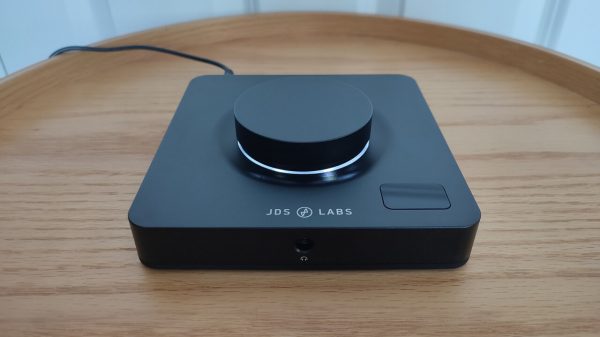

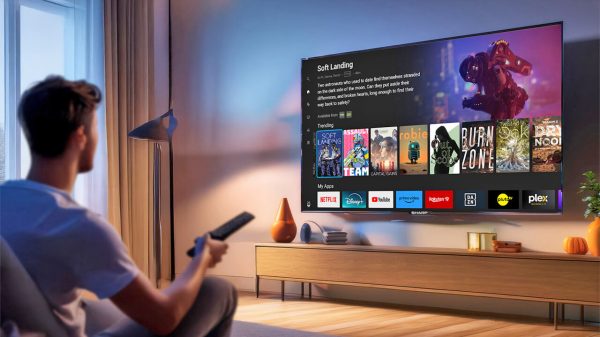

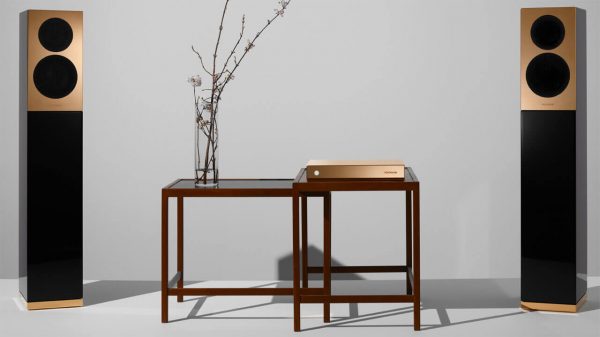
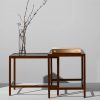

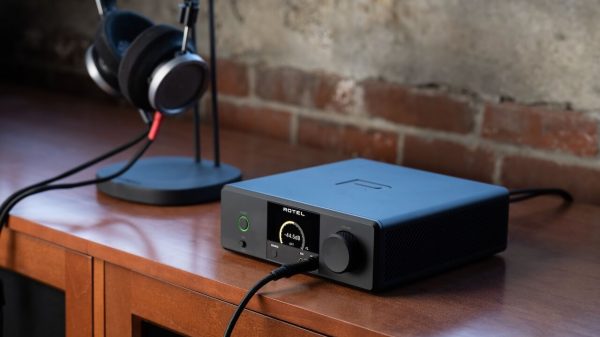
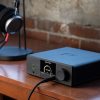














Fred
April 12, 2021 at 12:21 pm
Apologies for the basic Q – but can you use this DAC with a stereo system as well (plugging into the aux connections with a converter)? This one looks decent for the price but I do not use headphones all that often.
Ian White
April 12, 2021 at 1:31 pm
Absolutely. 3.5mm on one end and RCA at the other.
Just remember to turn the volume down on your amp and source the first time you use it. It goes to “11” and I almost destroyed a pair of headphones that way.
Ray Espendezr
November 20, 2021 at 12:30 am
I Just got mine a couple days ago and I am full of regret. The highs are good and the mid-range was easily outclassed by amps 1/3 its cost. The worst part is the bass. THis amp makes even Hifiman HE500 like cheap car door spearkers. This was easily my worst purchase of 2021 and now I know why there are so few comprehensive reviews available. I really tried to like it because I love its form factor. However, the sound quality was very disappointing and the Razer customer service nearly as bad as Comcast. I hope I can get my money back. Do not buy this thing until you try it yourself firt.
Ian White
November 20, 2021 at 2:11 am
Ray,
Hate to read that. I do agree that the tonal balance is not warm; I make that point a few times in the review. I find it slightly bright and it’s a tad sterile depending on the headphones. I prefer the Helm Bolt to be honest.
Ian White
Rafael Batlle
February 23, 2023 at 5:14 am
This review is spot on, I had the dragonfly cobalt and loved it, but its internals are weak and the audio connector fell off the board, I could not buy it again after that. Bought the THX Onyx instead, as my hi-fi system is a 1000 Watt old live sound Carvin amp with 15″ three way speakers and 18″ dual woofers. The Carvin set-up sounded sweet but a bit dark with the cobalt. With the THX Onyx it came to life, I hear clear, detailed and,yes, sweet sounding classical hi-res QOBUZ files. Tried the THX with Sennheiser 650s and did not like the sound. Will the full power of the Carvin live sound setup it is the best sound I have ever owned.